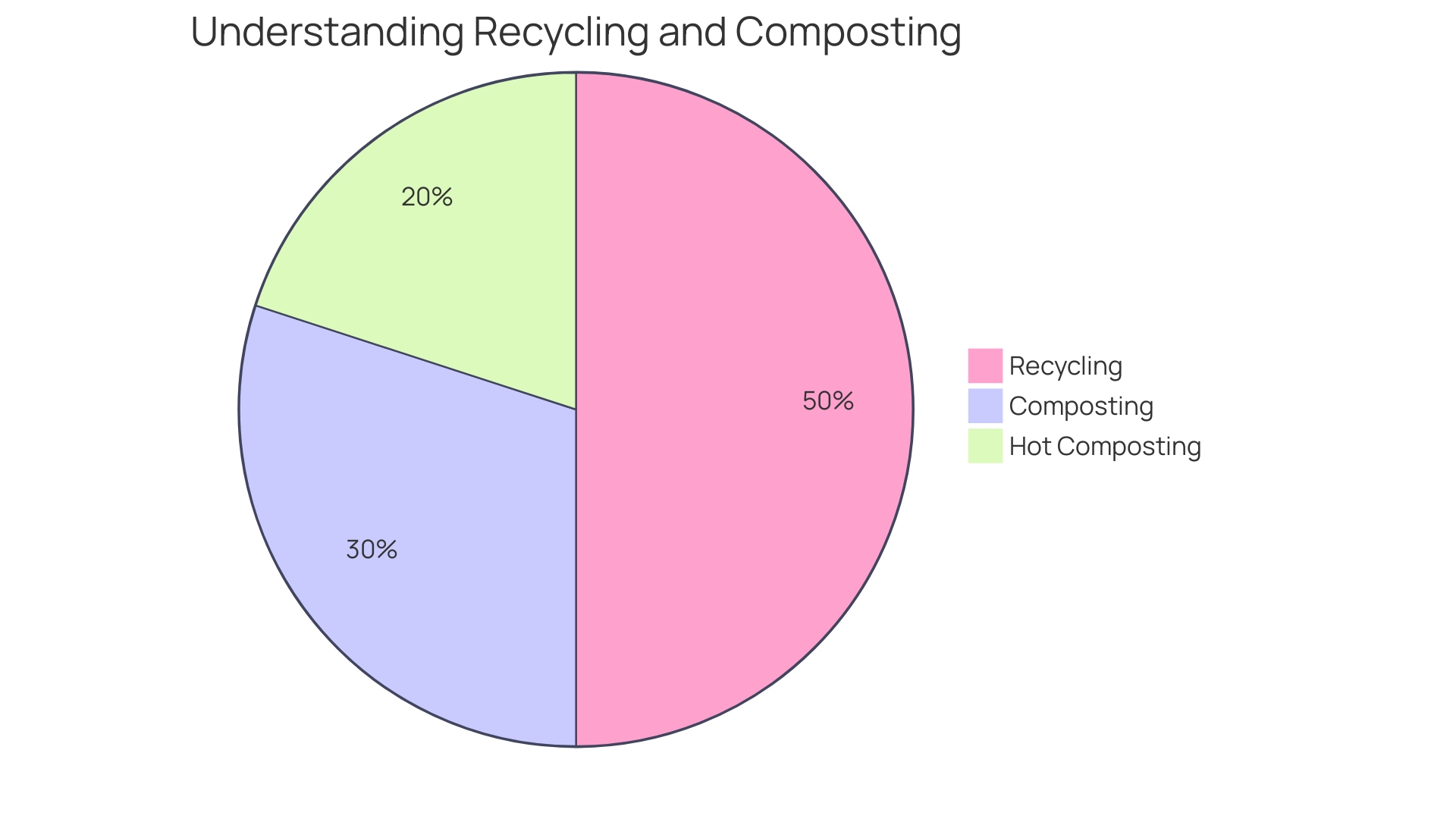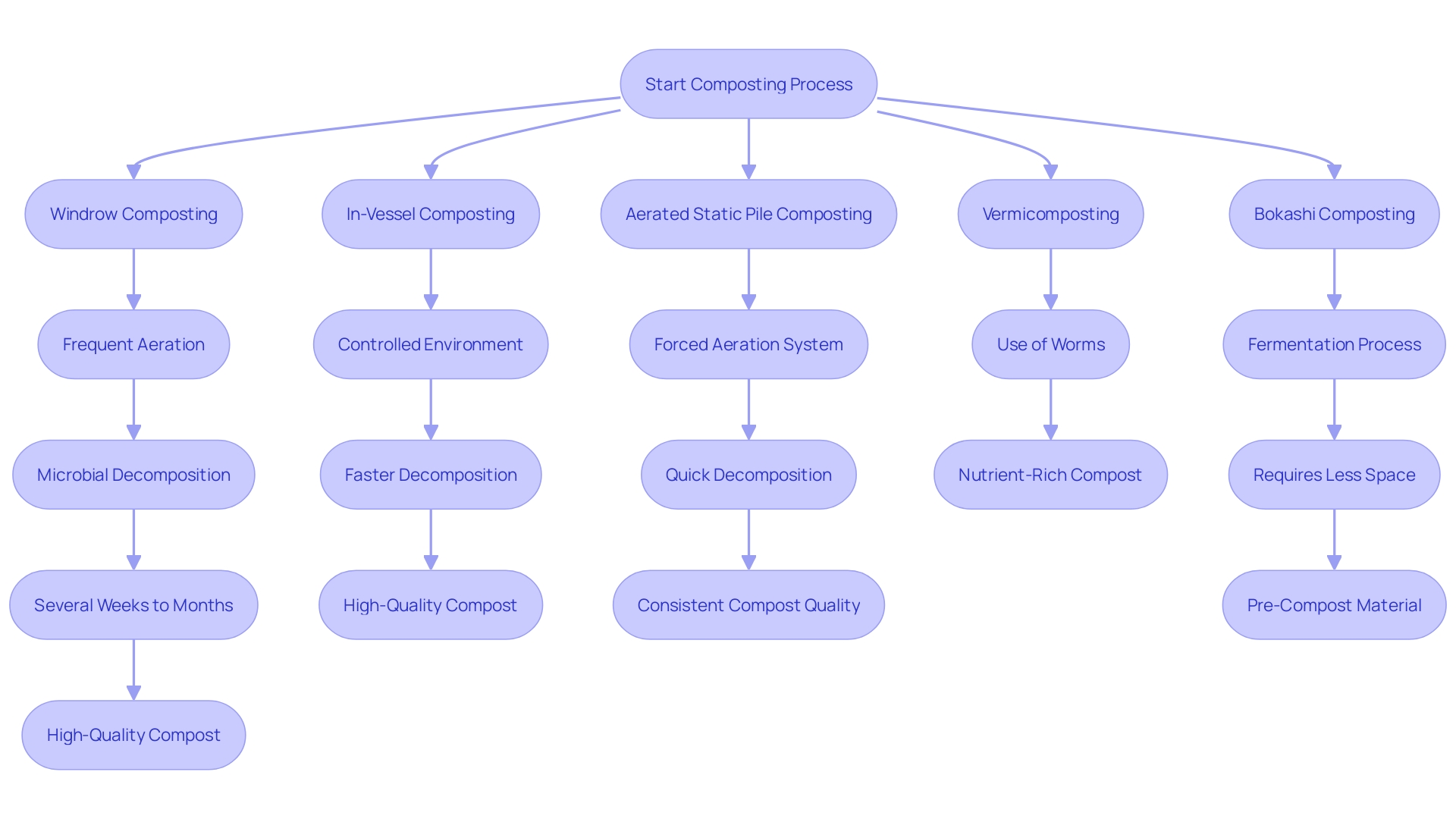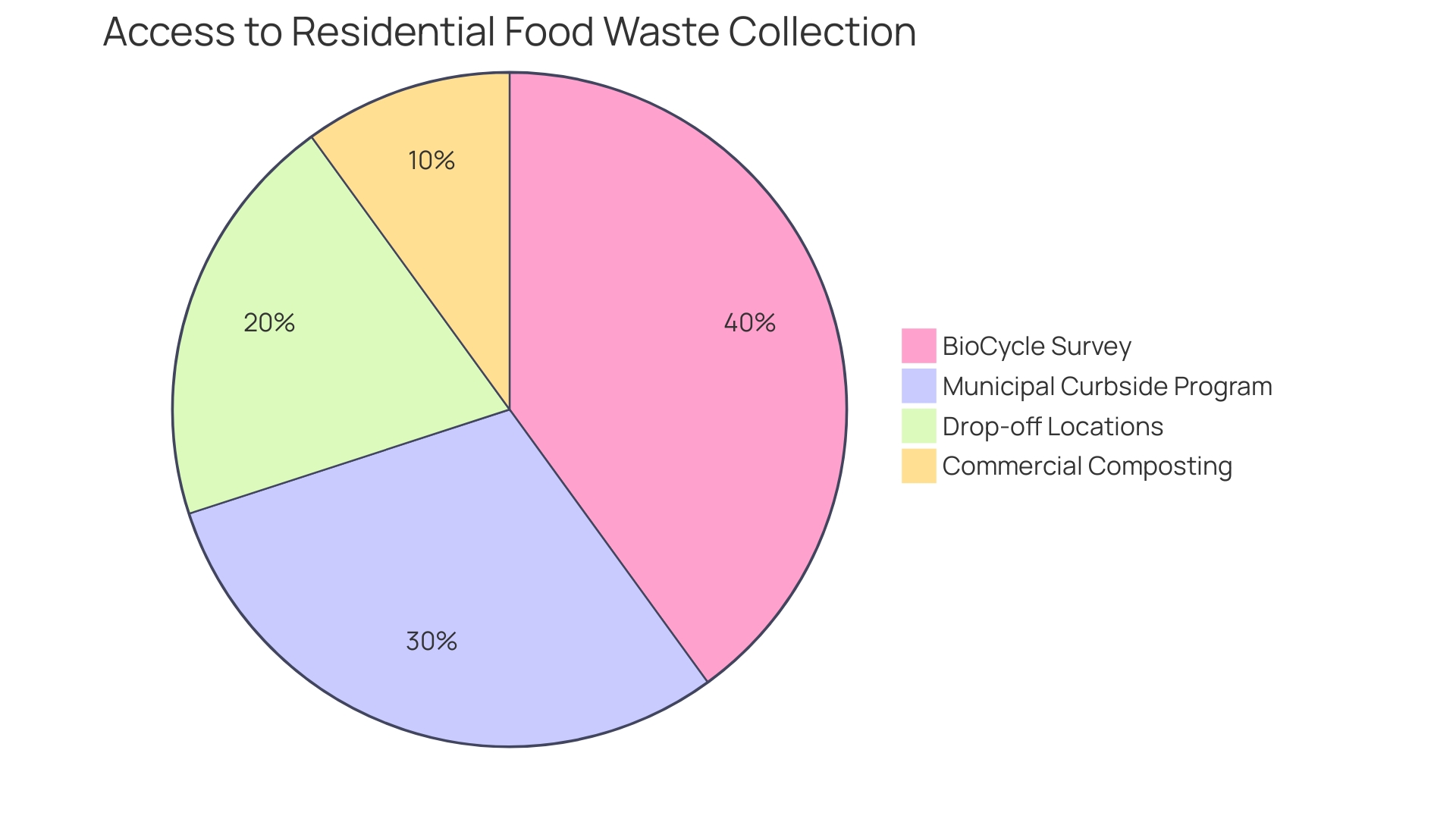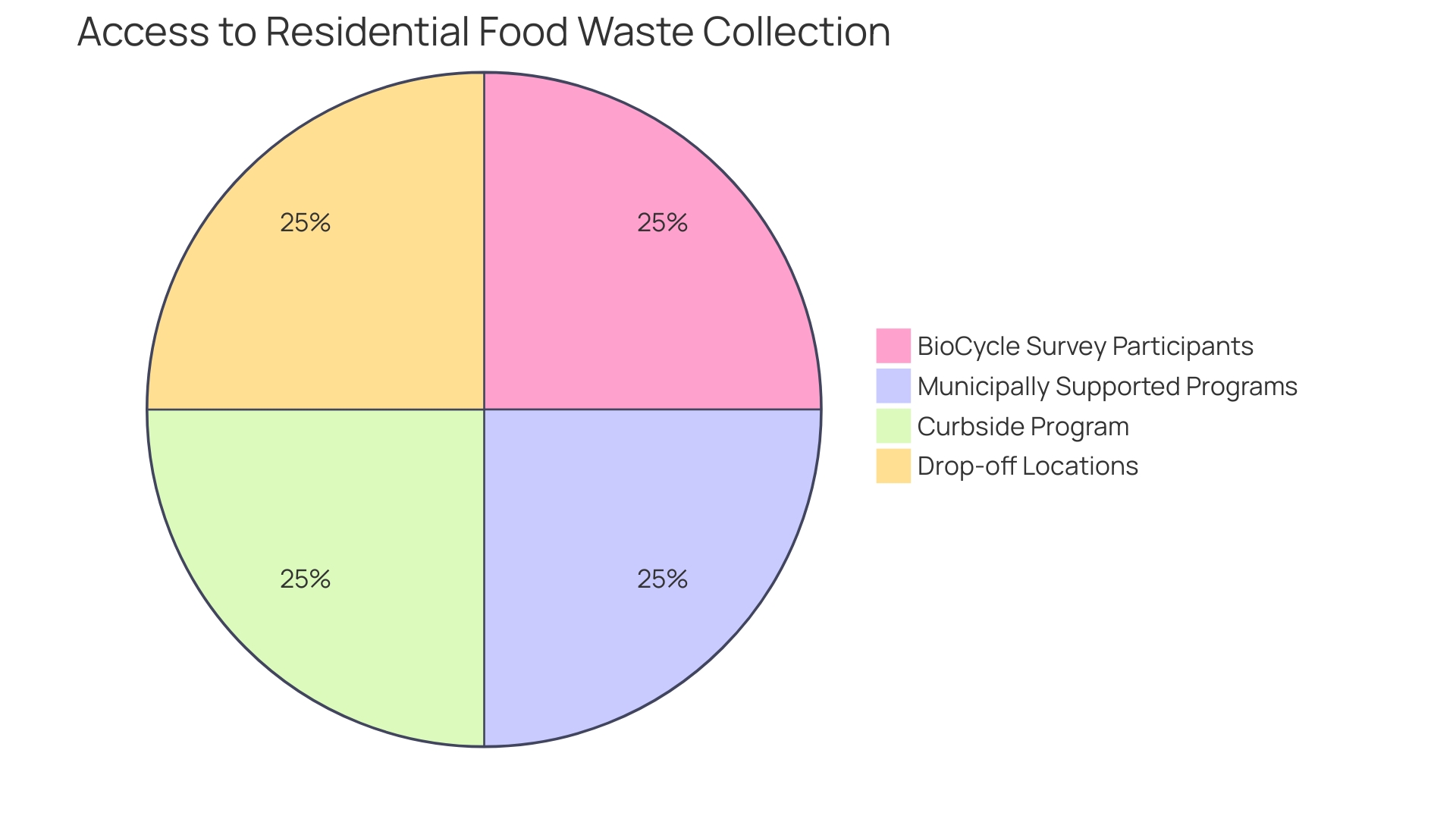Table of Contents
- Purpose and Importance of Composting
- Types of Composters
- Comparison of Composter Types
- Benefits of Each Composter Type
- Key Features and Specifications
- User Scenarios and Practical Applications
Introduction
Understanding the importance of composting in sustainable waste management is crucial. Composting is not just about breaking down organic matter; it’s about transforming waste into a nutrient-rich treasure for our soil. By composting, we prevent materials from adding to landfills and reduce the production of methane gas.
Additionally, composting contributes to a healthier, more sustainable ecosystem. Companies like Recycling Alternative have shown the transformative power of composting, growing from a small operation into a thriving enterprise. In cities like Nashville and New York City, efforts are being made to quantify food waste and implement improved waste management practices.
The environmental benefits of composting are clear, with the U.S. EPA reporting that over 28% of what we throw away could be composted. Differentiating between compost types is crucial, especially for farming, as high-quality compost can significantly impact soil health and yield. Composting is a circular solution provided by nature, waiting to be adopted on a larger scale for the betterment of our communities and the planet.
Purpose and Importance of Composting
Understanding the vital importance of composting in sustainable waste management is a game-changer. This process is not just about breaking down organic matter like food scraps, lawn clippings, and agricultural refuse; it’s about transforming waste into a nutrient-dense treasure for our soil. By composting, we’re not only preventing these materials from adding to the growing pile of waste in landfills and reducing the production of methane gas, but we’re also actively contributing to a healthier, more sustainable ecosystem.
The transformative power of composting is evident in the success stories of organizations like Recycling Alternative. This company has grown from a small operation into a thriving enterprise, employing dozens and expanding its services to include waste collection, recycling, and composting. They’ve mastered the complex logistics and engineering required to manage waste for the industrial, commercial, and institutional sectors, proving that innovative solutions can make a significant impact.
In cities like Nashville, Denver, and New York City, projects have been undertaken to quantify the staggering amounts of food waste generated by various sectors. Through meticulous research, including bin digs for accurate data, the goal is to rescue surplus food that would otherwise contribute to the waste problem. This fact-finding mission sheds light on the potential for improved waste management practices across the board.
Moreover, the environmental benefits of composting are clear and supported by statistics. The U.S. Environmental Protection Agency (EPA) reports that more than 28% of what we throw away could be composted. Recognizing this, the U.S. Department of Agriculture (USDA) encourages composting initiatives to mitigate greenhouse gas emissions and bolster community soil health.
Compost isn’t just a mixture; it’s a meticulously crafted product that can be tailored to specific needs. Whether it’s enriching vineyard soil or meeting a farmer’s specific requirements, the type of compost used can significantly impact its effectiveness and value.
Differentiating between compost types is essential, especially when considering the use for farming. High-quality compost, free from contaminants like plastics and metals, is not only more beneficial for the soil but also for the environment. This distinction is crucial as farmers often cite compost quality and cost as barriers to adoption.
Composting stands as a testament to nature’s ability to recycle and rejuvenate, a point echoed by environmental advocates. As less than 30% of Americans currently compost, we can look to nations like Austria, where nearly all waste is either recycled or composted, as an example of the profound benefits that come with embracing this practice. Composting is a circular solution provided by nature, waiting to be adopted on a larger scale for the betterment of our communities and the planet.

Types of Composters
Navigating the world of commercial and industrial composting systems can be complex, but understanding the different options available is crucial for businesses aiming to manage waste effectively. The diversity in composting methods is vast, each suited to particular requirements and waste types.
Windrow composting is a popular outdoor method where organic waste is piled into long rows. Regular turning of these windows is essential to maintain aeration and support the breakdown process by microbes, which naturally generate heat indicative of biological degradation.
In-vessel composting offers a more controlled environment, leveraging enclosed systems that can include mechanical agitation and aeration systems. These composters are well-insulated to retain the microbe-generated heat, optimizing the decomposition timeframe and producing compost that is stable and mature.
Aerated static pile composting is characterized by its use of a network of pipes or blowers that inject air into the composting material, enhancing microbial activity. This aeration is a key factor in accelerating the composting process, making it a preferred choice for managing the highly putrescible feedstock that requires careful handling.
Vermicomposting introduces a natural workforce—worms, especially red wigglers. These efficient decomposers consume organic waste and produce nutrient-rich castings, an excellent byproduct for soil amendment.
Lastly, Bokashi composting stands out for its fermentation technique, employing a mix of microorganisms to break down waste. This method is particularly suited for small-scale operations and can even be conducted indoors.
Each of these systems takes a unique approach to manage organic waste, from leveraging the science of microbes in generating heat to using worms as natural recyclers. Recognizing the distinct advantages of each can lead to a more effective and sustainable waste management strategy for businesses.

Comparison of Composter Types
Selecting the right composter for your business is a critical decision that requires a thorough understanding of various factors. Composters come in a multitude of sizes and capacities, and they are not one-size-fits-all. Smaller models are perfect for modest needs, while larger systems cater to commercial or industrial demands.
The timeframe for composting also varies; some composters work rapidly, converting waste to compost within weeks, whereas others might need several months.
Moreover, the space available for composting should be considered. Certain composters function well in tight quarters or even indoors, while others might necessitate a more expansive outdoor setup. The maintenance and operational demands differ greatly too, with some systems requiring constant attention to factors like moisture levels and temperature, and others boasting a more ‘set it and forget it’ approach due to automation.
Lastly, the financial aspect can’t be ignored. The initial cost of composters can range widely, as can the ongoing operational expenses. Thus, it’s important to weigh the upfront investment against the long-term benefits.
For instance, in the JANO project, the goal of making nutritious food regularly available is partially achieved by creating efficient composting methods to support local agriculture. Similarly, cities like Cleveland, grappling with waste from demolished structures, can look to composting as a sustainable waste management solution. In such cases, composting systems that can handle a variety of organic materials and operate within the constraints of urban environments are invaluable.
As highlighted by industry experts, commercial composting is a science-driven process that depends on the right balance of carbon, nitrogen, oxygen, and water. It’s not just about the heat generated by microbes, but also about the time required to create a stable, mature product. Real-world applications and advancements in composting technology are making these systems more accessible and efficient, addressing the pressing need for sustainable waste management and contributing to the larger environmental movement against pollution and climate change.

Benefits of Each Composter Type
Choosing the right composter for your business can make a significant difference in managing organic waste effectively. Each type of composter serves a specific purpose and offers distinct advantages.
- Windrow Composters*: These systems are a boon for large-scale composting operations. They handle substantial volumes of waste, which makes them a staple in many municipal composting programs. The cost-effectiveness of windrow composters aligns with the goals of projects like the NRDC initiative, which focuses on reducing food waste in metropolitan areas through efficient waste management practices.
- In-Vessel Composters*: For urban businesses with space constraints, in-vessel composters are a game-changer. They ensure a controlled environment for rapid composting, aligning with CubicFarm Systems Corp.’s commitment to technological solutions that support a sustainable and localized food supply.
- Aerated Static Pile Composters*: Offering excellent aeration, these composters can manage a diverse range of organic materials. Their low-cost and minimal maintenance requirements make them suitable for regions where commercial composting facilities are scarce, addressing concerns similar to those raised about the persistence of plastics in the environment.
- Vermicomposters*: An indoor composting solution that’s both compact and free from odors. This method is particularly valuable for businesses with limited outdoor space, echoing the ethos of JANO, which aims to make nutritious food regularly available through efficient food distribution systems.
- Bokashi Composters*: Another indoor composting method, Bokashi, is quick and convenient, perfect for businesses and households wanting to process food waste discreetly and efficiently.
Understanding the specific benefits of each system is crucial. For instance, an analysis by the U.S. Environmental Protection Agency found that organic waste constitutes over 28% of household rubbish. By selecting the appropriate composter, businesses not only adhere to USDA initiatives to curb food waste and emissions but also contribute to soil health and community wellbeing.
In summary, the choice of composting system can be pivotal in achieving waste management objectives, enhancing local sustainability, and supporting initiatives to reduce the environmental footprint of food production and distribution.

Key Features and Specifications
Choosing the right commercial and industrial composting system can be a game-changer for businesses aiming to manage waste more effectively and sustainably. It’s not just about finding a sturdy composter; it’s about selecting a system that meshes seamlessly with your operations and adheres to environmental guidelines.
For starters, let’s talk durability. A robust composter that can take on the relentless task of breaking down organic waste is non-negotiable. These workhorses are the unsung heroes in the world of waste management, ensuring that your operations never skip a beat.
Then there’s temperature control—vital for the decomposition process. By maintaining the right temperature, composters not only speed up the breakdown of waste but also eliminate pathogens and weed seeds, ensuring the end product is safe and ready for use.
Odor management is another critical feature. Nobody wants their site smelling like last week’s leftovers, especially if you’re operating in an urban setting. Systems with odor control keep things fresh and neighbor-friendly.
Monitoring and control systems bring composting into the 21st century. Real-time data lets you tweak the process on the fly, ensuring peak efficiency and quality of the compost.
Lastly, compliance is key. You want a system that ticks all the boxes for waste management and environmental regulations, avoiding any legal pitfalls while doing good for the planet.
These features are not just nice-to-haves; they’re essential for a successful composting operation that contributes to healthier people and plants. Take Bayer’s innovative agricultural systems, for example, which are setting new standards in sustainability by reducing greenhouse gas emissions and water use. Similarly, tackling urban challenges like Cleveland’s abandoned houses requires smart waste solutions that can handle the volume and toxicity of the material.
In the architectural world, sustainability takes center stage as practices like Warehome use advanced CAD platforms for greener designs, emphasizing the importance of materials and real-time collaboration. This approach mirrors the need for cutting-edge composting systems that provide detailed insights into materials and processes.
Commercial composting’s science is well-documented, as seen in the success of states like California and New York, which have embraced food recovery and recycling. Investing in the right system is not just about compliance or efficiency; it’s about joining the ranks of those leading the charge in environmental stewardship and reaping the benefits of cleaner air, energy savings, and even improved productivity.
Remember, the right commercial composting system isn’t just an expense—it’s an investment in the future of your business and the planet.
User Scenarios and Practical Applications
Composting systems are diverse, each tailored to meet the needs of different settings and waste management goals. Windrow and in-vessel composters, for instance, serve municipalities and waste management organizations adeptly, handling substantial organic waste from local communities, businesses, and various institutions. As they delve into the science of composting, these entities must strike a balance between carbon and nitrogen, ensure proper aeration, and maintain the right level of moisture, all while giving the organic matter time to transform into nutrient-rich compost.
For the bustling kitchens of restaurants and food service establishments, where space is at a premium and food waste is abundant, vermicomposters and bokashi systems offer a compact solution. These systems allow for on-site waste management, converting leftovers into valuable compost, right in the heart of cities like Nashville, Denver, and New York City.
In the agricultural realm, windrow composters and aerated static pile systems are the workhorses, managing crop remains, animal waste, and other organic farm by-products. These methodologies not only reduce waste but also contribute to soil enhancement, creating a sustainable loop that benefits both farmers and the environment.
Educational institutions can harness the power of composting as a practical teaching tool, integrating it into their sustainability initiatives. Through composting, students gain firsthand experience in environmental stewardship and the intricacies of waste management, preparing them for a future where policies like California’s and New York’s food recovery and recycling initiatives are becoming increasingly common.
In the face of new policies, such as France’s ‘compost obligatoire’ regulations set to take effect in 2024, the importance of understanding and implementing effective composting systems is clear. These regulations aim to convert organic waste into biogas and compost, replacing chemical fertilizers and promoting a circular economy.
As composting technology advances, cities are finding innovative ways to turn their waste into resources. Surprise, for example, is exploring the potential of transforming waste from face masks, a significant byproduct of the COVID-19 pandemic, into useful products that can be recycled repeatedly, demonstrating the versatility and sustainability of modern composting solutions.

Conclusion
Composting is a vital practice in sustainable waste management, offering numerous benefits. It transforms organic waste into nutrient-rich compost, preventing landfill accumulation and reducing methane gas production. Composting contributes to a healthier ecosystem and is supported by initiatives like Recycling Alternative, which has grown into a thriving enterprise.
Efforts in cities like Nashville and New York City to quantify food waste and improve waste management practices highlight the environmental benefits of composting. The U.S. EPA reports that over 28% of what we discard could be composted, emphasizing the need for widespread adoption.
Choosing the right composter is essential for effective waste management. Composters come in various sizes and capacities, tailored to different needs. Understanding the benefits and features of different composters empowers businesses to make informed decisions.
In conclusion, composting is a practical and sustainable solution for managing organic waste. It enhances soil health, reduces landfill waste, and contributes to a healthier planet. By embracing composting practices on a larger scale, we can create a more sustainable future for our communities and the environment.
Let’s join the movement towards widespread composting adoption and make a positive impact on our planet.
